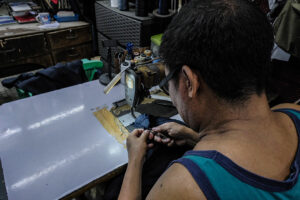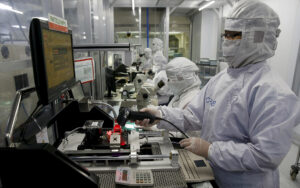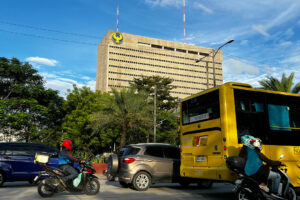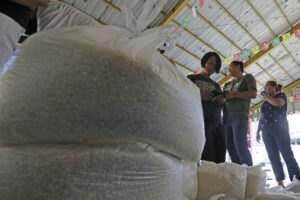THE PHILIPPINE ECONOMY is expected to grow above 6% in the second quarter amid base effects and improved government spending, HSBC Global Research said on Wednesday.
“For the second quarter, [the economy is] going to grow above 6%, mainly because of base effects, because as you remember, in second quarter of last year, the government underspent their budget,” HSBC economist for ASEAN (Association of Southeast Asian Nations) Aris D. Dacanay said at a media briefing.
If realized, the second-quarter gross domestic product (GDP) growth would be faster than 4.3% in the same period in 2023, and the 5.7% expansion in the first quarter.
The government is targeting 6-7% GDP growth this year.
The Philippine Statistics Authority (PSA) will release second-quarter GDP data on Aug. 8.
“Right now, we’re not underspending. So, with the spending plan in check, with consumption slowing down but still robust; with investments, again, cooling, but not really falling off a cliff, quarter-on-quarter growth should be a little less than potential,” Mr. Dacanay said.
Household consumption, which accounts for about 80% of GDP, grew by 4.6% in the first-quarter period, the slowest since the coronavirus pandemic.
Government final consumption expenditure growth slowed to 1.7% in the first quarter from 6.2% in the same period in 2023.
Last week, Budget Secretary Amenah F. Pangandaman said measures on early procurement and digitization of state transactions would ensure that government spending is on track this year.
However, Mr. Dacanay said there is still a risk that weak consumption could weigh on growth. Consumption accounts for around a quarter of GDP growth.
“We do expect consumption or demand will likely be weak in the second or third quarter of 2024, since we’re still adjusting with high interest rates. We’re still adjusting to high inflation. We’re still building our savings back up,” Mr. Dacanay said.
The National Economic and Development Authority Board’s move to reduce tariffs on basic commodities like rice should ease pressure on household budgets and boost private spending, HSBC said.
“Cutting the tariff rate of rice by 20 percentage points (ppts) could unlock around 2% of household budgets to be spent on other things, more so for the low-income households who spend a larger portion of their budgets on rice,” Mr. Dacanay said, adding this could contribute around 1.4 ppts to overall growth.
Mr. Dacanay clarified that HSBC has yet to consider the recent tariff reduction in its official GDP growth forecast.
HSBC also expects the Bangko Sentral ng Pilipinas (BSP) to cut its key policy rate by 25 basis points (bps) in the fourth quarter after the US Federal Reserve starts its easing cycle. Another 125 bps of rate cuts is expected in 2025.
“With growth still strong, I do think the BSP will tilt towards the safer side of things, and basically lead to cut in the fourth quarter of 2024 after the Fed,” Mr. Dacanay said.
“Cutting ahead of the Fed would still be tricky and would depend on how fast the disinflationary impact of the tariff adjustment would come through,” Mr. Dacanay said.
The Philippines could potentially attract more foreign direct investments (FDIs) once central banks begin their easing cycles.
“When all the central banks in the world ease their policy rates, the Philippines will be one of the benefactors in terms of FDI, in terms of capital flowing in,” Mr. Dacanay said.
However, he said the government needs to improve the ease of doing business in the country as well as lower power costs to attract investors. — B.M.D.Cruz





